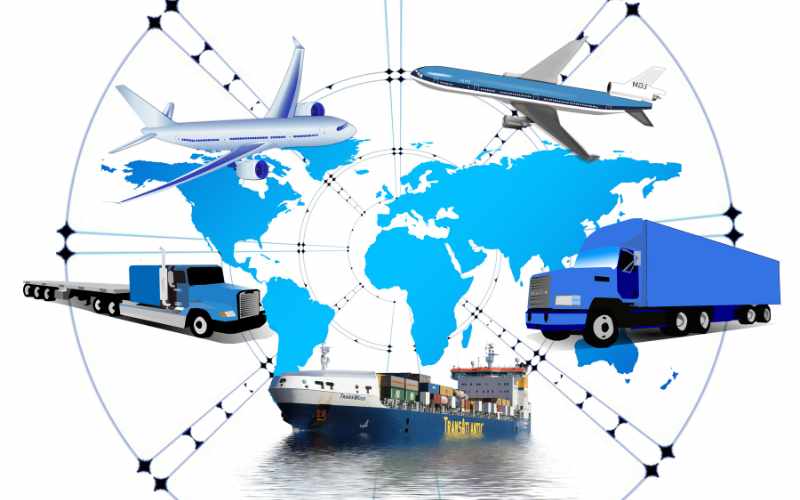Logistics is a vital sector that connects producers and consumers across the world. It is also a dynamic and evolving industry that faces various challenges and opportunities in the global market.
Supply chain agility
Supply chain agility is the ability to respond quickly and effectively to changing customer demands, market conditions and risks. It is set to become one of the focuses of logistics trends in 2023 as businesses strive to satisfy the ever-increasing demand for products and services.
To achieve supply chain agility, businesses need to adopt flexible and scalable solutions that can adapt to different scenarios and requirements. Some of the key enablers of supply chain agility are:
– Digitalization: The use of digital technologies such as cloud computing, artificial intelligence, blockchain and internet of things can help businesses collect, analyze and share data across the supply chain, enabling better visibility, collaboration and decision making.
– Automation: The use of automated systems and processes such as indoor mobile robots, inventory management software and smart contracts can help businesses optimize efficiencies, minimize errors and reduce costs along the supply chain.
– Diversification: The use of multiple sources, modes and routes of transportation and distribution can help businesses mitigate risks, reduce dependencies and increase resilience in the face of disruptions and uncertainties.
Green logistics
Green logistics is the practice of minimizing the environmental impact of logistics activities such as transportation, warehousing and packaging. It is also a growing demand from customers, regulators and stakeholders who are increasingly concerned about sustainability and social responsibility.
Green logistics can bring various benefits to businesses such as cost savings, improved reputation, competitive advantage and compliance with regulations. Some of the ways to implement green logistics are:
– Alternative fuels: The use of renewable and low-carbon fuels such as biofuels, hydrogen and electricity can help reduce greenhouse gas emissions and air pollution from vehicles and equipment.
– Eco-friendly packaging: The use of recyclable, biodegradable and reusable materials for packaging can help reduce waste generation and disposal costs.
– Reverse logistics: The process of collecting, reusing and recycling products and materials at the end of their life cycle can help recover value, extend product life span and reduce environmental impact.
Supply chain visibility
Supply chain visibility is the ability to track and monitor the status, location and condition of products, assets and resources throughout the supply chain. It is also a key factor for customer satisfaction, operational efficiency and risk management.
Supply chain visibility can be enhanced by using various technologies such as:
– Sensors: The use of devices such as RFID tags, GPS trackers and temperature sensors can help capture real-time data on product movement, quality and safety.
– Platforms: The use of software applications such as dashboards, portals and mobile apps can help aggregate, visualize and share data across the supply chain stakeholders.
– Analytics: The use of tools such as artificial intelligence, machine learning and big data can help process, interpret and generate insights from data to support decision making.
Labour shortage
Labour shortage is a challenge that affects many logistics sectors such as transportation, warehousing and delivery. It is caused by various factors such as an aging workforce, skills gap, high turnover rate and low attractiveness.
Labour shortage can have negative impacts on businesses such as increased costs, reduced productivity, lower quality and delayed delivery. Some of the solutions to address labour shortage are:
– Training: The provision of education, training and certification programs can help improve skills, knowledge and competencies of existing and potential workers.
– Retention: The implementation of incentives, benefits and recognition schemes can help motivate, engage and retain workers.
– Recruitment: The adoption of innovative strategies such as social media, gamification and referrals can help attract, hire and onboard new workers.
E-commerce management
E-commerce management is the process of planning, executing and controlling the online sales of products and services. It is also a major driver of growth for logistics industries as more customers prefer to shop online.
E-commerce management poses various challenges for logistics providers such as high customer expectations, complex fulfillment processes and intense competition. Some of the best practices for e-commerce management are:
– Integration: The integration of e-commerce platforms with logistics systems such as inventory management, order management and delivery management can help streamline workflows, reduce errors and improve customer service.
– Optimization: The optimization of e-commerce operations such as product selection, pricing, promotion and distribution can help increase sales, reduce costs and maximize profits.
– Innovation: The innovation of e-commerce solutions such as personalized recommendations, augmented reality and drone delivery can help enhance customer experience, loyalty and retention.
Logistics is a fast-changing and competitive industry that requires constant adaptation and innovation. By following the latest logistics trends, businesses can gain a competitive edge, improve performance and achieve success in 2023 and beyond.
Works Cited:
(1) Logistics Trends for 2023: The top 5 trends in logistics | TAWI. https://www.tawi.com/insights/logistics-trends-for-2023-the-top-5-trends-in-logistics/
(2) Logistics Trends 2023 | Logistics Industry Trends | Discover DHL. https://www.dhl.com/discover/en-us/global-logistics-advice/logistics-insights/logistics-and-delivery-trends-2023
(3) Logistics Trends 2023 | Logistics Industry Trends | Discover DHL. https://www.dhl.com/discover/en-global/logistics-advice/logistics-insights/logistics-and-delivery-trends-2023
(4) 7 logistics trends for 2023 – Mecalux.com. https://www.mecalux.com/blog/logistics-trends-2023



